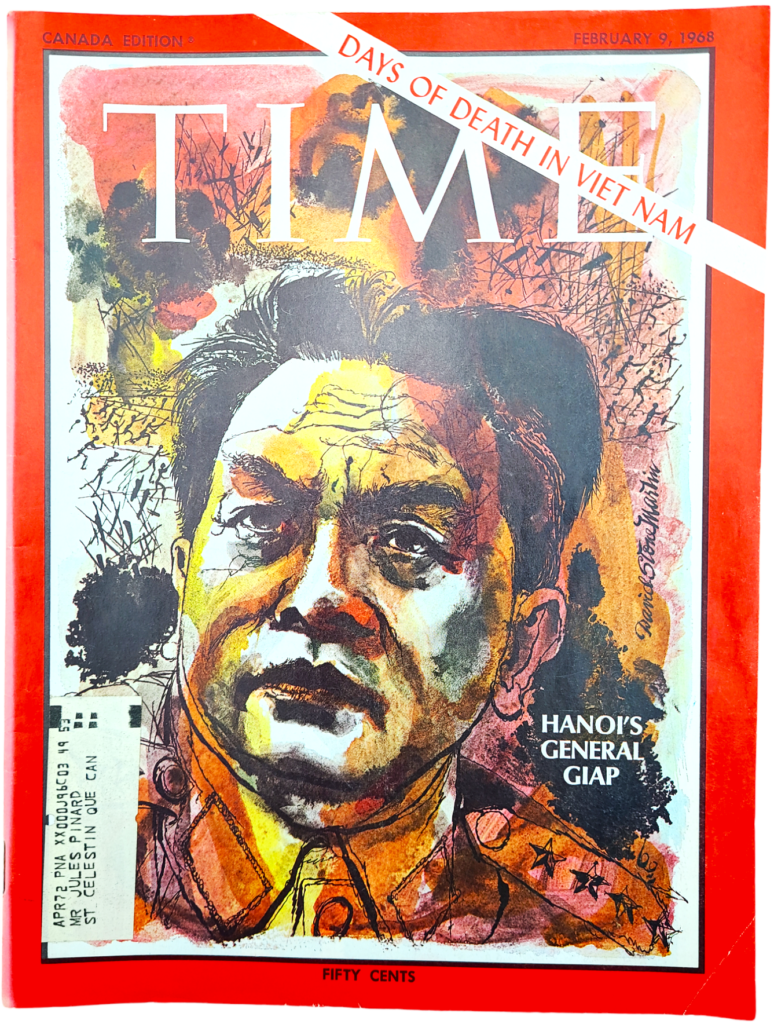Our vintage TIME magazine this week is from February 9, 1968 and features North Viet Nam’s General Giap on the cover. This issue is following the recent Tet offensive. As always, there are a few other articles and advertisements discussed to show what was going on this week in TIME.
Viet Cong Attack During Truce
In South Viet Nam a holiday truce for the feast of Tet led to Vietnamese celebrators filling the streets with firecrackers. Shortly after the celebrations ended, the destruction began. More than 36,000 Viet Cong soldiers commenced with coordinated attacks against airfields and military bases, government buildings, population centers and civilians. Their targets were located from Quand Tri near the DMZ all the way down to Duong Dong 500 miles to the South.
The attacks encompassed almost 40 cities and town across South Viet Nam. They destroyed more than 100 allied planes and helicopters. The Viet Cong demonstrated that even after all the advances the allied forces had made in years of war, they were still able to strike anywhere in the country. This included the U.S. Embassy in Siagon.
Although intelligence reports had indicated that there could be some attacks during the Tet, the massive coordinated attack was a complete surprise. It was unprecedented in modern military history. The enemy force integrated unseen everywhere across the country. They simultaneously appeared and struck in a hundred places all at once.
The Viet Cong soldiers had to blend in with the local population to migrate towards their target zone. They had to do this while finding ways to bring large amounts of ammunition and weapons. It wasn’t until after the attack that intelligence sources realized that the extraordinarily large number of funerals in the previous week were an integral part of the plan. The Viet Cong had buried their weapons in coffins and then dug them up on the night of the offensive. A week later, there was still pockets of fighting across Saigon.
Despite the well-planned surprise attacks, the Viet Cong forces suffered nearly 15,000 deaths. In contrast, The U.S dead numbered 367 and the Vietnamese military suffered about 700 losses.
Despite the larger loss of life to the Viet Cong forces, this was still somewhat of a success for them. The boldness and planning behind these attacks were clearly signs that North Viet Nam’s Defense Minister General Vo Nguyen Giap had personally been involved in the general offensive. This was the first time since the war against the French that Giap personally directed the campaign in South Viet Nam.
Giap’s full intention behind the offensive was not known, but it was likely that he considered the political impact just as important as the military impact. He had said the previous September that “Guerrilla activities and large-scale combat coordinate with each other, help each other and encourage each other to develop,” and “At the same time, they closely coordinate with the political struggle to score great victories in both military and political fields, thus leading the resistance toward final victory.”
From a political perspective, Giap’s offensive would have embarrassed the United States. It would have created the impression that U.S. and South Vietnamese forces did not have as much control as it seemed. In fact, there was a hope that this would have been viewed as a liberation. When the offensive began, the Viet Cong radio and Hanoi radio started to call for South Vietnamese to welcome the attackers as a liberation force. They encouraged ARVN forces to join with the fight with the North Vietnamese and overthrow their government.
Whether the attempted liberation was wishful thinking or a mis-read on the situation, the North Vietnamese didn’t get very much support. Few throughout South Viet Nam took the opportunity to support the North.
United States General Westmoreland believed that the Tet offensive was one step in a larger plan. One of General Giap’s intentions may have been to force the U.S. to deploy troops in response to the attacks. This would stretch the U.S. lines and take troops away from Khe Sanh.
If Giap could take Khe Sanh, then his forces would have a more favorable position over the allied forces in Quang Tri and Thua Thien provinces. As a result, the allied forces may have had to pull back and establish a new defensive line much further South. A victory at Khe Sanh would be of great military, propaganda and psychological value to the North Vietnamese.
It is important to remember that the information in this article comes in the weeks after the Tet offensive. Numbers of casualties, North Vietnamese intentions and other details may not have been entirely clear at the time of reporting.
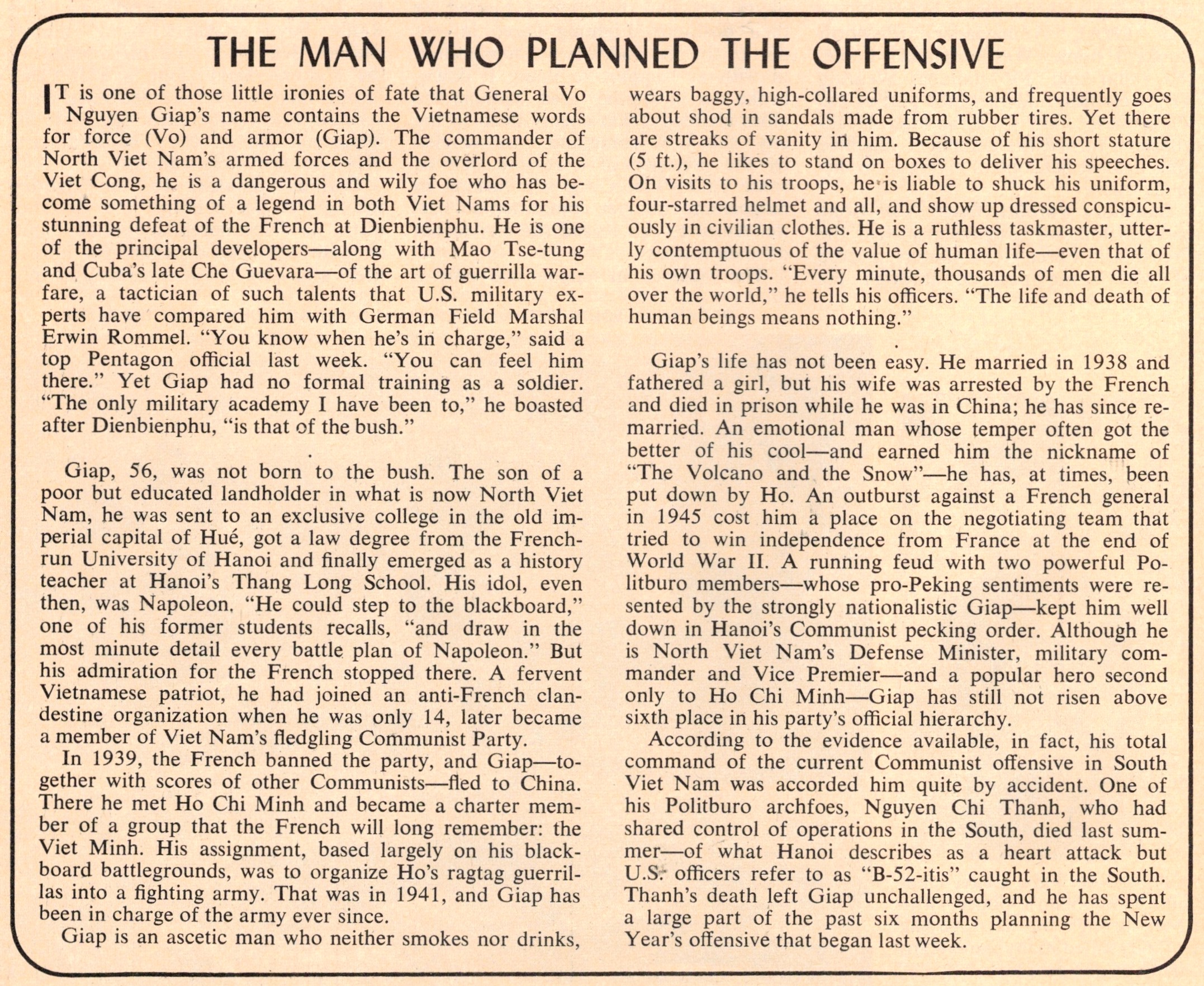
Commandos Attack the U.S. Embassy
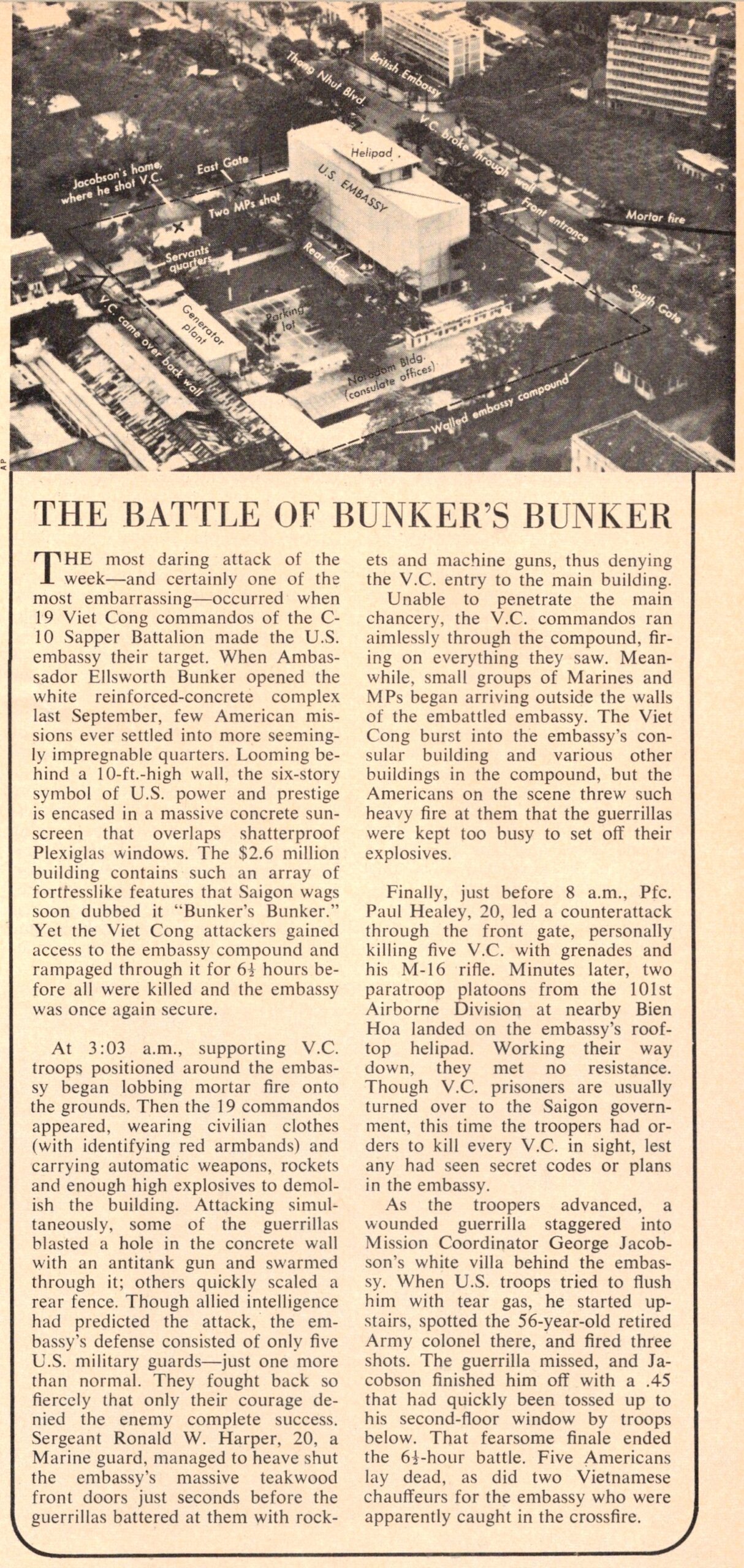
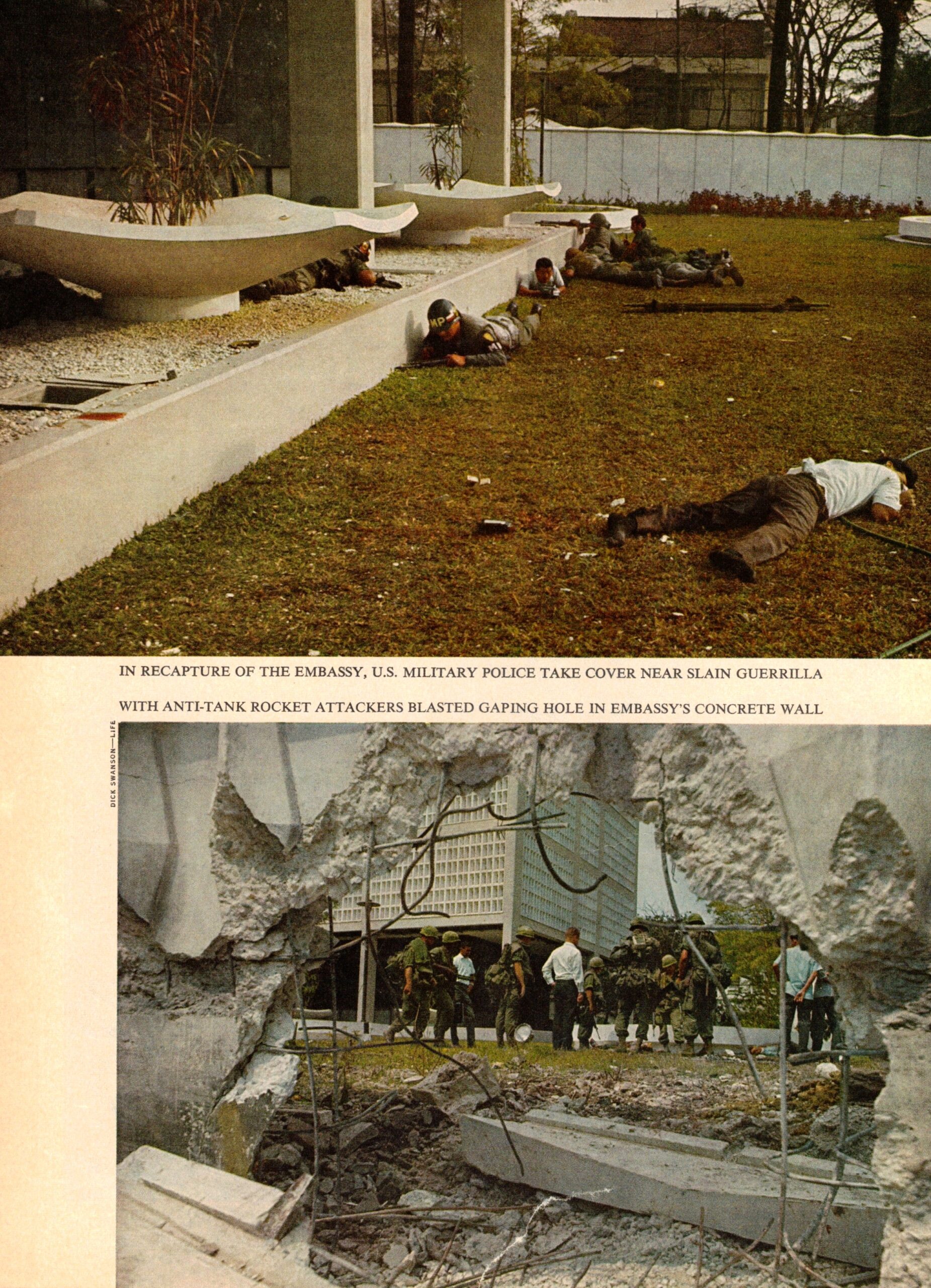
B-52 Bomber Crashes in Greenland with H-Bomb
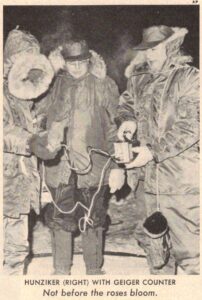 An Air Force team was working outside Thule, Greenland to find H-bomb parts from a B-52 bomber crash that scattered contaminated debris all over the ice. The recovery team were living out of 5ft tall igloos and plywood huts in temperatures that reportedly reached -30 F and -100 F with the wind chill.
An Air Force team was working outside Thule, Greenland to find H-bomb parts from a B-52 bomber crash that scattered contaminated debris all over the ice. The recovery team were living out of 5ft tall igloos and plywood huts in temperatures that reportedly reached -30 F and -100 F with the wind chill.
The 400 personnel established a grid pattern over the crash area to help organize their efforts. Each piece of wreckage that was found would be plotted on the grid in an attempt to map out the crash pattern.
There was a risk that the plutonium-uranium 235 contaminated wreckage melted into or through the 9ft thick ice. Therefore, the team took ice core samples for radioactivity analysis. There was also a potential need to clean the ocean floor in the event that material melted all the way through the ice sheet.
Further contamination within the local wildlife population was a concern. A hunter from Greenland was hired to hunt seal and walrus so that specimens could be examined for radioactive contamination. In addition, scientists were planning to trace the route of contamination as melt water flows into Baffin Bay
Alcohol to Prevent Premature Birth
Today we all know that drinking is not advised when pregnant. Apparently that wasn’t fully the case in 1968 because it was being used in some cased to prevent premature deliveries. When Obstetrician Arthur Perell had a patient begin contraction early in her sixth month, he took immediate steps to stop the contractions.
Instead of some type of surgical intervention, Perell got his patient tipsy and kept her that way until the contractions stopped. His patient was released from the hospital with permission to “feel free to do a little elbow bending.” His patient went home and continued drinking two bourbon-and-ginger-ale highballs daily. Unfortunately, the two drinks per day didn’t raise her blood alcohol level enough to reduce oxytocin levels. In this case the patient had to go back to the hospital for an additional eight week stay.
Anna-Riitta Fuchs, a physiologist at Rockefeller University discovered the use of alcohol to help save premature babies. Fuchs found that IV alcohol treatments in animals stopped the production of oxytocin, the hormone responsible for labor contractions. In her fourth pregnancy, Fuchs began having premature labor contractions and became the first human to receive the treatment.
In 1968 the initial results from 300 patients treated at two different hospitals were positive. About 70% of patients had their contractions stopped and birth delayed for up to fifteen weeks. Although many Obstetricians still had reservations about this treatment method, Fuchs and Perell insisted that there had been no ill effects and many babies had been saved.
There has been much more research on the subject since this article was released. At least one study found that there was no more benefit to IV alcohol treatment when compared to subjects who simply had bedrest instead.
Canada's Best Selling Luxury Car
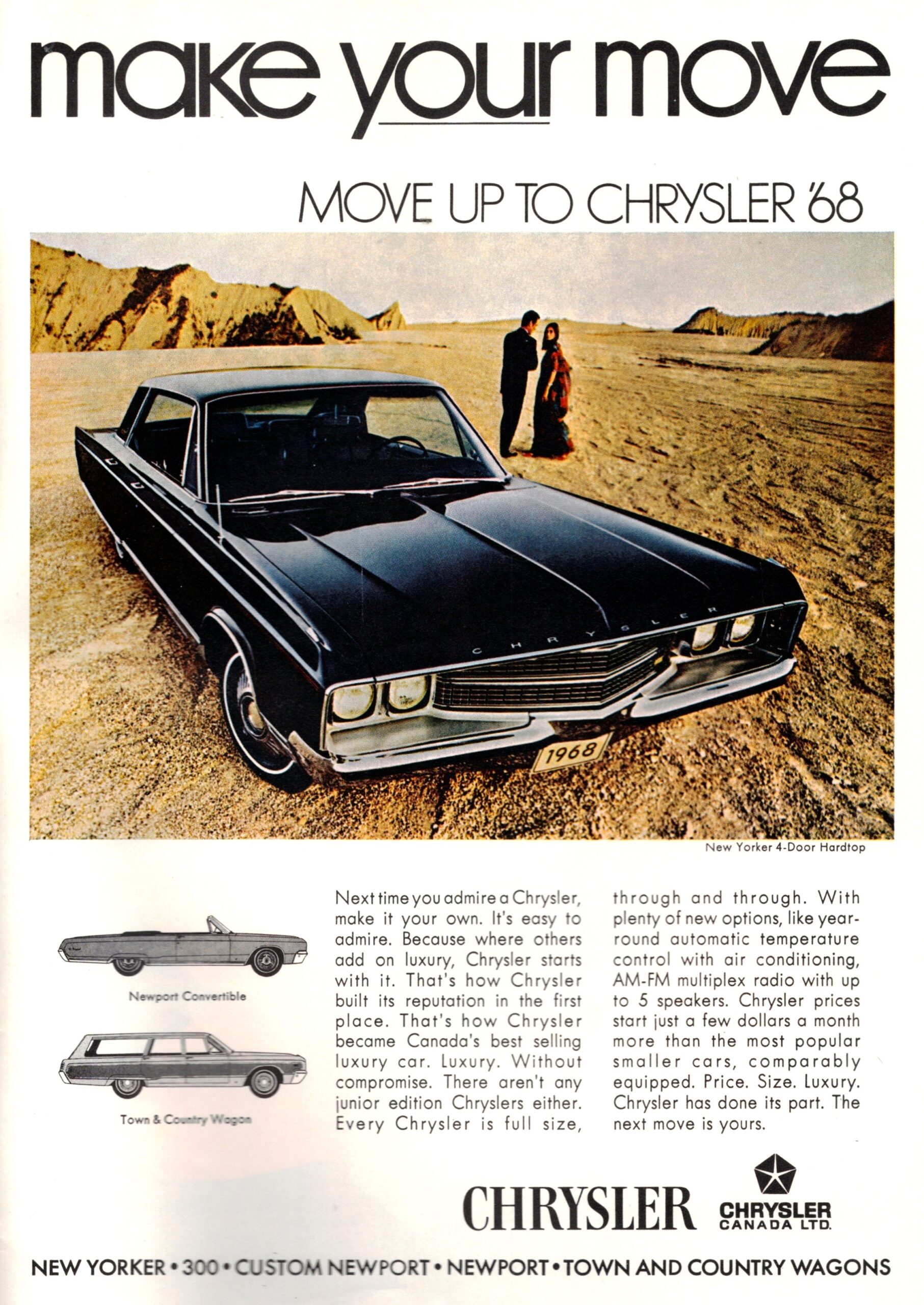
Breakout Star - Clint Eastwood
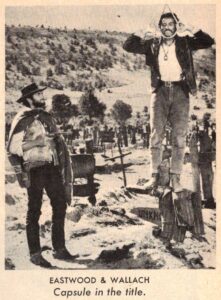 The Good, the Bad & the Ugly received mixed reviews when it was first released. This time article described the film as “The good lies in Leone’s camera work—expertly combining color and composition, with sharp attention to the details of shape and texture that are available when shooting on location rather than on studio sets. Bad is the word for the wooden acting, and Leone’s addiction to the cramped values and stretched probabilities of the comic strip. And ugly is his insatiable appetite for beatings, disembowelings and mutilations, complete with closeups of mashed-in faces and death-rattle sound effects.”
The Good, the Bad & the Ugly received mixed reviews when it was first released. This time article described the film as “The good lies in Leone’s camera work—expertly combining color and composition, with sharp attention to the details of shape and texture that are available when shooting on location rather than on studio sets. Bad is the word for the wooden acting, and Leone’s addiction to the cramped values and stretched probabilities of the comic strip. And ugly is his insatiable appetite for beatings, disembowelings and mutilations, complete with closeups of mashed-in faces and death-rattle sound effects.”
Despite the original reviews, the Rotten Tomatoes approval rating for The Good, the Bad and the Ugly is 97%, with an average rating of 8.8/10. The website’s critical consensus reads, “Arguably the greatest of the spaghetti westerns, this epic features a compelling story, memorable performances, breathtaking landscapes, and a haunting score.”
The movie was a financial success, it made over $38 million worldwide at the box office. The film also played a major part in Clint Eastwood’s rise as a Hollywood star.
Visit Britain This Year
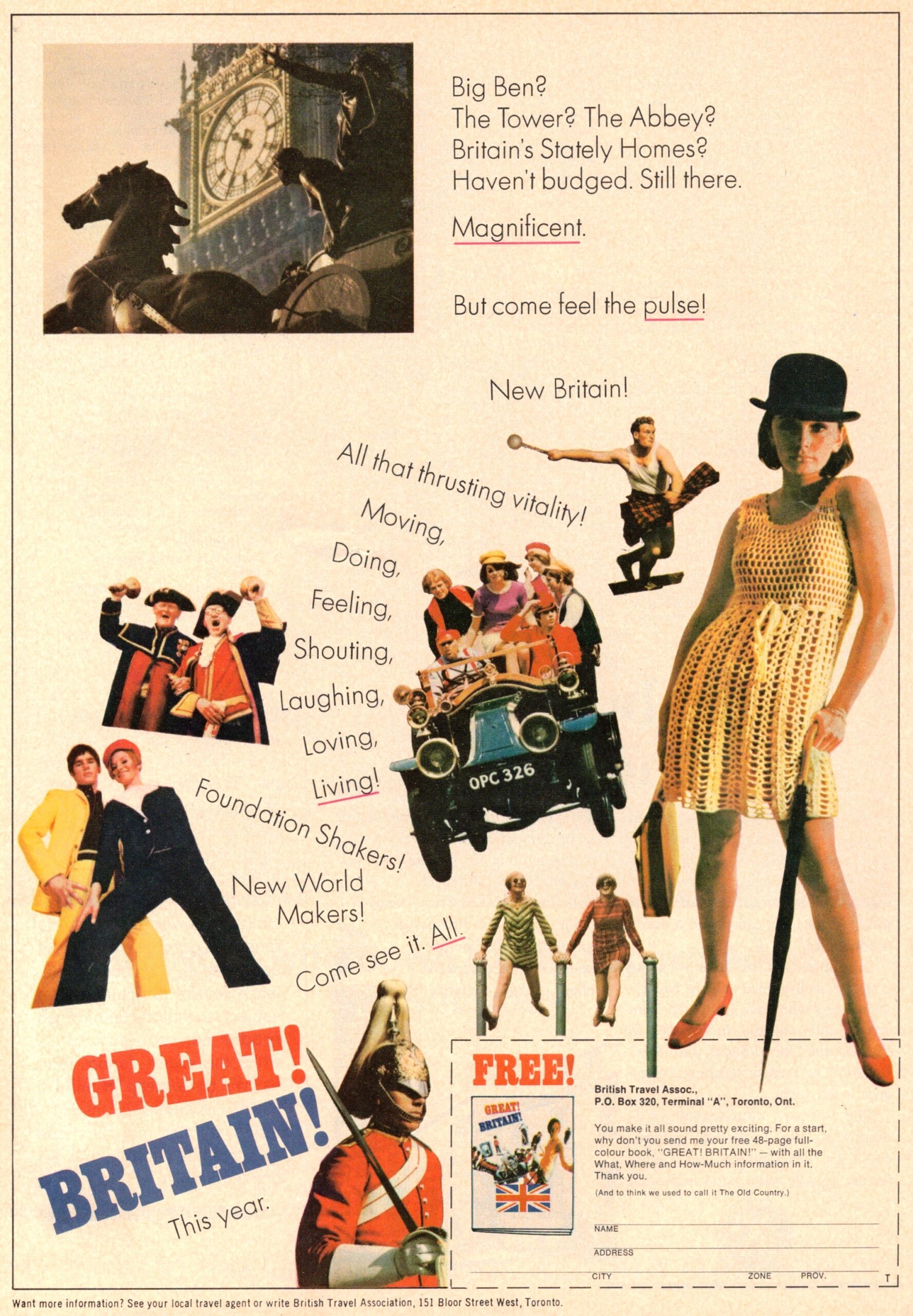
Wrap up
This February 9, 1998 issue of TIME magazine gave an early interpretation of the events following the Tet offensive. It is also packed with a lot of other topics that give a unique look at what was going on this week in TIME. You can find the full issue and many more at PFTP Antiques. Come check out our inventory to see what else we have to offer.
We would love to here from our readers about their thoughts regarding these articles, so please leave a comment.
Next week we are going to see what was going on in the issue of TIME magazine from February 23, 1959.
